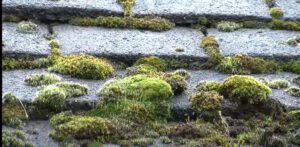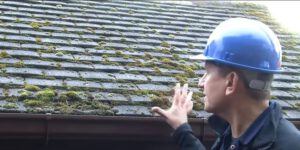 Moss and algae growth on the roof is a common issue faced by many homeowners in Australia. While they may seem harmless at first, if left untreated, these organisms can cause significant damage, leading to expensive repairs or even a full roof replacement. This article offers in-depth guidance on how to prevent moss and algae growth on your Australian roof. We will delve into understanding what causes this growth, prevention methods, appropriate cleaning techniques, and long-term maintenance strategies.
Moss and algae growth on the roof is a common issue faced by many homeowners in Australia. While they may seem harmless at first, if left untreated, these organisms can cause significant damage, leading to expensive repairs or even a full roof replacement. This article offers in-depth guidance on how to prevent moss and algae growth on your Australian roof. We will delve into understanding what causes this growth, prevention methods, appropriate cleaning techniques, and long-term maintenance strategies.
Understanding Moss and Algae Growth
Moss and algae thrive in damp, shaded environments with ample access to sunlight for photosynthesis. Their spores are airborne, and once they land on a suitable area, such as your roof, they start to grow. Moisture is the key ingredient for their survival. The frequent rainfall and humid weather in many parts of Australia, particularly coastal regions, provide the ideal conditions for moss and algae.
Roofing materials also play a role in promoting growth. For instance, limestone fillers used in asphalt shingles are a food source for Gloeocapsa magma, a species of cyanobacteria that causes black streaks on roofs. Composite, wood, and tile shingles tend to hold more moisture than metal ones, making them more susceptible.
Prevention Methods
- Improve Sunlight Exposure: Sunlight is a natural moss and algae deterrent. If certain parts of your roof are shaded by trees or buildings, consider trimming back branches or finding other ways to increase sun exposure.
- Clean Gutters Regularly: Clogged gutters can cause water to back up and seep into the roof, creating a perfect environment for moss and algae. Ensure your gutters and downpipes are clear of leaves, twigs, and other debris. Regular checks, especially after a storm or during autumn when leaf fall is abundant, can significantly help.
- Install Copper or Zinc Strips: When it rains, particles from copper and zinc strips wash down the roof, creating an environment that’s hostile to moss and algae. Installation at the roof’s peak can provide a long-term solution, but make sure to consult with a roofing professional to avoid any damage.
Cleaning Techniques
 If your roof already has moss or algae, don’t worry. There are several cleaning methods available, both chemical and non-chemical.
If your roof already has moss or algae, don’t worry. There are several cleaning methods available, both chemical and non-chemical.
- Pressure Washing: Pressure washing is a commonly used non-chemical technique. However, it must be done carefully as the high-pressure water can damage roofing materials or force water under shingles. It’s recommended to hire a professional with experience in roof cleaning.
- Soft Washing: This method uses a lower pressure washer and often includes a cleaning solution to kill and remove moss and algae. Again, it’s usually best to hire professionals to avoid any inadvertent damage to your roof.
- Chemical Cleaning: Various commercial products can effectively kill moss and algae. Look for products that are eco-friendly and designed for use on roofs. Always follow the manufacturer’s instructions. Using a sprayer, apply the cleaner, let it sit for the prescribed time, then rinse it off.
- Homemade Solutions: If you prefer a DIY approach, a solution of equal parts household bleach and water can serve as an effective moss and algae killer. Remember to protect your plants and lawn from runoff, as bleach can harm them.
Long-Term Maintenance
Regular inspection and maintenance are crucial for keeping your roof moss and algae-free. Clean your roof as soon as you see signs of moss or algae. Keep gutters clear and prune overhanging branches that shade your roof.
Consider applying a moss and algae-resistant treatment. Some products can be sprayed on the roof after cleaning to inhibit growth.
Alternatively, when it’s time to replace your roof you can choose a product that is naturally resistant to moss and algae growth. Copper, zinc, or other metal roofs are often effective in minimizing the risk of future problems.
Before undertaking any maintenance task on your roof, make sure you understand proper safety procedures. Wear shoes with rubber soles for good grip and if possible, get someone to help you.
Finally, check with your local building inspector to make sure your roofing project complies with any local regulations. Taking the time and effort to maintain your roof will save you money in the long run by prolonging its life and keeping it looking great for years to come.
